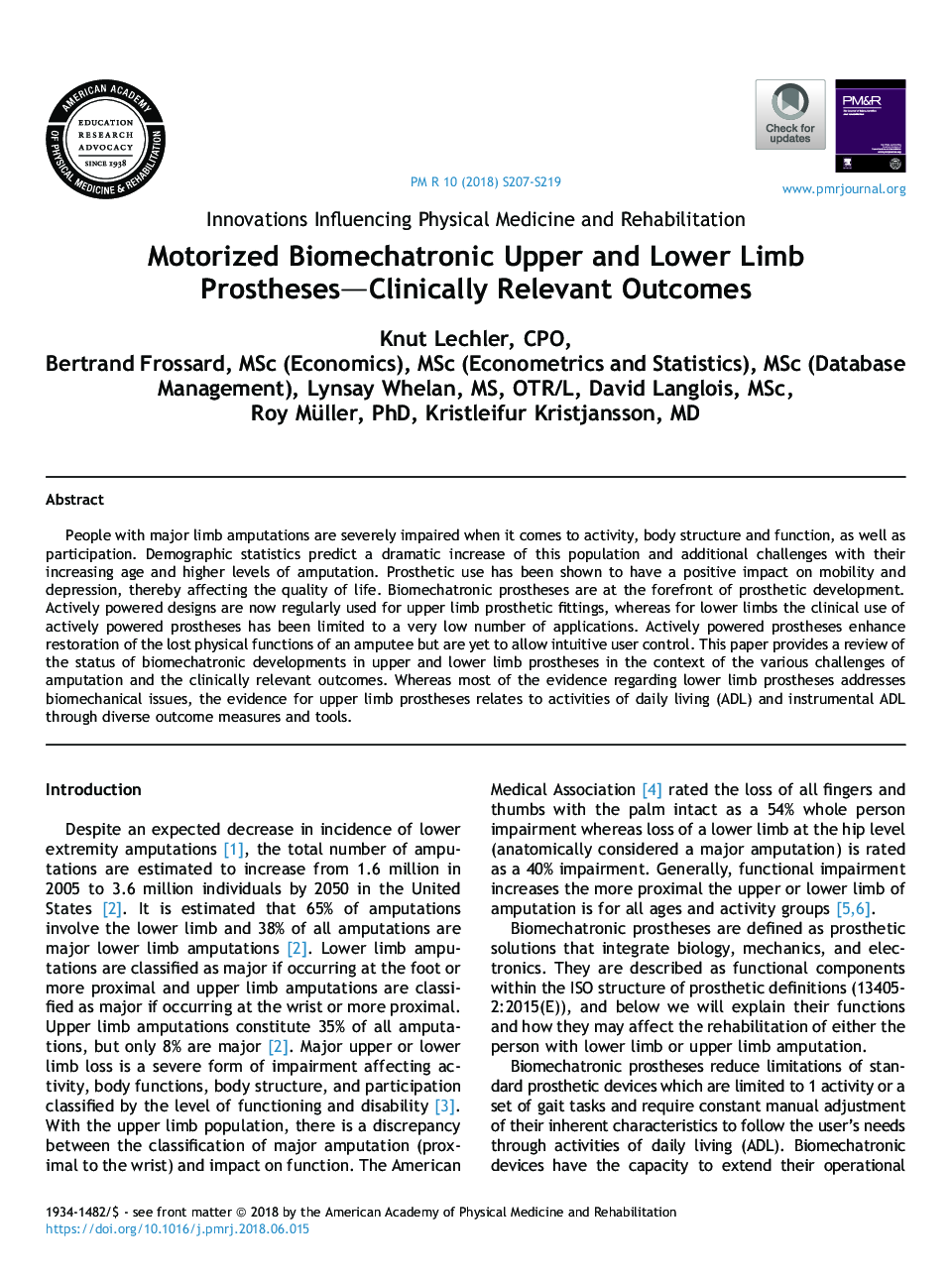| Article ID | Journal | Published Year | Pages | File Type |
|---|---|---|---|---|
| 11019207 | PM&R | 2018 | 13 Pages |
Abstract
People with major limb amputations are severely impaired when it comes to activity, body structure and function, as well as participation. Demographic statistics predict a dramatic increase of this population and additional challenges with their increasing age and higher levels of amputation. Prosthetic use has been shown to have a positive impact on mobility and depression, thereby affecting the quality of life. Biomechatronic prostheses are at the forefront of prosthetic development. Actively powered designs are now regularly used for upper limb prosthetic fittings, whereas for lower limbs the clinical use of actively powered prostheses has been limited to a very low number of applications. Actively powered prostheses enhance restoration of the lost physical functions of an amputee but are yet to allow intuitive user control. This paper provides a review of the status of biomechatronic developments in upper and lower limb prostheses in the context of the various challenges of amputation and the clinically relevant outcomes. Whereas most of the evidence regarding lower limb prostheses addresses biomechanical issues, the evidence for upper limb prostheses relates to activities of daily living (ADL) and instrumental ADL through diverse outcome measures and tools.
Related Topics
Health Sciences
Medicine and Dentistry
Orthopedics, Sports Medicine and Rehabilitation
Authors
Knut CPO, Bertrand MSc (Economics), MSc (Econometrics and Statistics), MSc (Database Management), Lynsay MS, OTR/L, David MSc, Roy PhD, Kristleifur MD,
